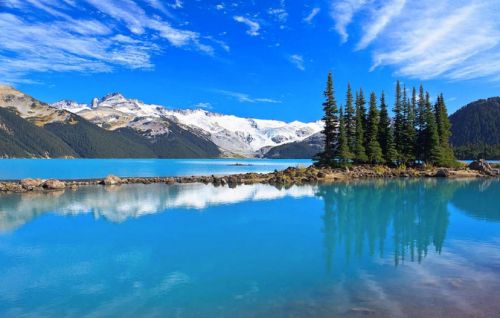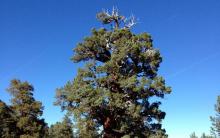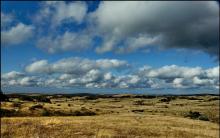Our planet is lucky with water. More than three quarters are covered with it: endless oceans and seas, a network of vessels-rivers, rivulets, streams, waterfalls and swamps. And lakes. Surely, you also know how pleasant it is: to sit on the shore, swim across and across, dive to the bottom... These natural reservoirs of fresh water seem so cozy, homely, close and understandable. At the same time, the largest lakes in the world can compete with many seas in area and depth. At least this applies to the representatives of the TOP 10, which we will talk about in this article.
The largest lake on Earth was called a sea for a reason. Its size really corresponds more to this league, and not to the lakes we are used to. Suffice it to say that, standing on one shore of the Caspian Sea, you will never see the other.
Let's look at the numbers. The surface area of this lake is 371 thousand square kilometers. The depth also corresponds to the scale - up to 1025 meters. This may well be a credit to any sea. This lake even has its own islands and bays, just like the big ones.
At different times, dozens of tribes lived on its banks, each of which gave it its own name. Girkanskoe, Khazarskoe, Khvylyanskoe, Saraiskoe, Derbentskoe and Dzungarianskoe (apparently like hamsters) ... But in each of these cases they added “sea”. Indeed, it’s hard to call this huge lake a lake. By the way, the water in it is really brackish.
Upper
Even those who skipped all geography classes at school know about the Great Lakes of Canada. This system includes several reservoirs, but Verkhneye deserves special attention. This is the world's largest freshwater lake, which holds more than 12 thousand cubic meters of water. Not surprising, given the area of 82 thousand square meters and the average depth of 147. It is also the highest of all the Great Ones.

Perhaps this lake can be assigned another “most” - the most picturesque. Its shores are surrounded by rocks, mountains, hills, plains, coniferous and deciduous forests. The nature of Canada is amazingly beautiful, but here it has outdone itself.
Many people perceive Africa as an arid continent where water is the greatest treasure. But the third largest lake in area is located here. Its area is about 68,000 square kilometers, but its depth is not enough, up to 80. Victoria is a wide and flat lake, like a plate. It is shared between three countries (Uganda, Kenya and Tanzania) and each got an impressive piece.

Victoria's fresh water is a treasure, but so is its flora and fauna. Its shores are divided between several national reserves, because almost all the rarest and most famous species of the Black Continent live here. True, everyone would be happy to get rid of one of them - the tsetse fly.
We have already studied the largest of the Great Lakes, now we can talk about the second - Huron. Its area is noticeably smaller - about 59,000 square kilometers. In comparison with those already listed, it is small, but if compared with the banal lakes, Huron is a real giant.

This lake was once full of fish, especially trout, which love cool water. But then people decided to improve what was already good, and introduced lampreys, smelt and some other species into Huron. Having no natural enemies or other restraining factors, they began to actively reproduce, displacing the old-timers.
The Great Lakes are named so for a reason. There are three of them in the top five largest by area alone. And Michigan is well worthy of getting here. It is only slightly smaller in size than Huron - 58,000 square kilometers. The difference is insignificant. By the way, geographers believe that Michigan and Huron are a single entity and separate them only out of habit.

The Great Lakes are not fairly divided between the US and Canada. Only one fell to the share of the States - Michigan.
There was already one large African lake, we can move on to the second. Tanganyika or Tanganaika, as it was previously called, is also the longest freshwater lake in the world, at least. In terms of depth, she fell just short of the championship title, but it is quite difficult to surpass Baikal, which we will talk about later.
The length of this lake is 676 kilometers with an average width of only 50. It is not surprising that its area is significantly smaller compared to the previous one - 33,000 square kilometers.
Its name is interesting. Translated, it means “tank full of fish.” Well, there really are a lot of fish here. For centuries it was the main source of food for the tribes living nearby.

Baikal has the best place on this site. Although this is not the largest lake in the world, it is the first in depth, the oldest, the cleanest, the most... Baikal is so huge that many people seriously call it the sea.
Some numbers:
- The surface area of Lake Baikal is 31,722 square kilometers.
- The length of the coastline is 2000 kilometers.
- The depth at the maximum point is 1642 meters.
- The volume of liquid is 23,615 cubic kilometers.
- Water transparency is 40 meters.
What is hidden behind these dry numbers? Firstly, Baikal is huge. Its area is three times larger than that of the Sea of Marmara. Secondly, it is very deep. Of course, not like the Mariana Trench, but it may well compete with dozens of seas. Thirdly, the water in it is very clean. Imagine a column of water 40 meters deep through which you can see the bottom. Incredible feeling. But the lake itself is just water. Baikal is valuable for its inhabitants. Most of them, about 1000 species, are found here and only here.

The fragile ecosystem of Lake Baikal, like many others, is hanging on the brink. Environmentalists have documented its contamination many times with a variety of waste. And if we don’t start solving this problem now, it may soon be too late for Baikal.
This African lake extends across three countries: Tanzania, Mozambique and Malawi. Its area is more than 30,000 km2, and the northern part reaches more than 700 meters in depth, which is much lower than sea level. The shores of Nyasa are mostly rocky and high, especially in its northern part, while in the south the lake lies framed by a narrow flat strip. This lake is home to huge predators: crocodiles, as well as hippos and water birds. Due to the large number of predators, Nyasa is not very popular among people - they prefer to look at it from afar. Weather conditions are also not conducive to tourist excursions: Nyasa is characterized by frequent severe storms, the water level can rise or fall sharply, so ships almost never sail on this lake (rare passenger transportation is carried out exclusively during the daytime).

Nyasa is nicknamed “the birthplace of aquarium fish” among researchers, as it is home to a huge variety of fish
Big bearish
Big Bear Lake is a real wonder that embodies all the beauty of northern nature. The reservoir itself is located in Canada and ranks fourth in size among all North American lakes, and has an outflow into the large Mackenzie River. Big Bear's area reaches 31,000 km² and is located at an altitude of 186 meters above sea level. Thanks to its location in the Arctic Circle, this reservoir allows you to observe the most beautiful natural phenomena: during the northern lights, many lights are reflected in the water surface, and they say that you can even lose reality somewhere between the sky and the surface of the lake. However, even if there is no mystical effect, visiting this Great Bear Lake is a great opportunity to admire the nature of the North, and it leaves no one indifferent!
Despite its beauty and large area, very few people live around Great Bear Lake, this is explained by the fact that it is covered with ice almost all year round.

The lake is navigable and has two port settlements: Deline (a port in the southwest) and Port Radium (located in the northeast part)
This is another sea on our list that is actually a huge salt lake. It is located in Central Asia and belongs to two states - Kazakhstan and Uzbekistan. The Aral Sea has a rather sad history: it was once one of the largest on Earth (it took fourth place in the world ranking), but now the Aral Sea is experiencing the consequences of severe shallowing. In the 2000s, its area reached a minimum - just over seven thousand square kilometers, and its colossal shallowing is not at all a natural pattern. The water level has dropped so much because a huge amount of agricultural chemicals and pesticides began to flow into the lake along with drainage water.

The once huge lake is drying up before our eyes
Unfortunately, such aggressive intervention in the natural environment soon made itself felt: dust storms carried poisoned salt from the lake, as well as sediment from toxic chemicals, over a distance of 500 km around the reservoir. This led to the fact that many natural phenomena slowed down or even stopped happening there: all vegetation now grows very slowly or does not grow at all, and the shore simply dies out, and with it the lake itself. Despite the fact that environmentalists managed to stop the rate of drying of the Aral Sea, it is no longer possible to return it to its previous volumes. For this reason, all the attention of ecologists is now focused on the Small Aral - the northern part of the reservoir, which it was decided to save.
There are tens of thousands of lakes on the planet. There are huge, large, large, small and tiny. Today we learned about the seven largest lakes in the world. But who can say that a small lake near your city is somehow worse?











The most beautiful motorcycles in the world
Which sea is the cleanest in the world?
Top 10 Most Expensive Furs
The largest and most luxurious casinos in the world
Knightly orders of Europe XI - XIII centuries